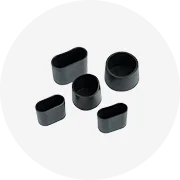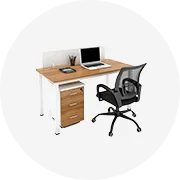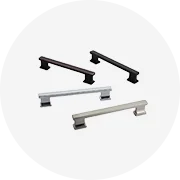

Jimny Cargo Luggage Carry Basket Bracket Roof Rack for Suzuki Jimny JB74 JB64 2018- Gen4 Sierra JB74w JB64w












A rack luggage system is an essential accessory for travelers and businesses alike, providing a secure and convenient way to transport various items on the roof of a vehicle. These systems are designed to accommodate a wide range of vehicles and storage needs, from the occasional holiday goer to the professional needing to transport goods. The rack for luggage is not just a functional tool but also an extension of the vehicle, often designed to complement its aesthetics and aerodynamics.
The rack luggage category encompasses a variety of systems, each with unique characteristics to serve different needs. For instance, roof racks for roof rails are designed to integrate seamlessly with the existing rails on a vehicle, offering a semi-permanent and sturdy solution. On the other hand, hotel luggage racks are crafted for portability and space efficiency within guest rooms. Specialized types like dance luggage with rack are tailored for performers, featuring compartments for costumes and accessories. Each type is a testament to the versatility of rack luggage systems, catering to specific requirements such as ease of access, weight capacity, and compatibility with vehicle types ranging from compact cars to large SUVs.
The structure of a rack luggage system is a marvel of engineering, designed to balance weight, durability, and ease of use. A typical system includes a base rack, crossbars, and mounting accessories. The base rack attaches to the vehicle's roof, providing a stable platform. Crossbars span the width of the roof, offering support and attachment points for luggage or other cargo. Mounting accessories, such as clamps and locks, secure the cargo in place. The operation of these components together ensures that the rack can hold luggage securely even at high speeds or on rough terrain, while also allowing for quick and easy installation and removal.
The choice of materials in rack luggage systems is critical for performance and longevity. Aluminum is favored for its strength-to-weight ratio, making it ideal for everyday use without burdening the vehicle with excessive weight. Stainless steel offers unmatched durability and load-bearing capacity, suitable for heavy-duty applications. For eco-friendly and aesthetic options, bamboo and solid wood are used in settings like hotels, where the visual appeal is as important as functionality. These materials are chosen not only for their physical properties but also for their ability to withstand environmental stressors such as UV rays, rain, and snow without deteriorating.
Rack luggage systems find their applications across various business sectors. In the hospitality industry, hotel luggage racks offer guests a convenient place to store their bags, enhancing the room's functionality and comfort. For the automotive sector, products like thule cargo racks and auto roof top carriers provide additional cargo space, essential for service vehicles or rental fleets. In the travel and outdoor industry, roof top cargo carriers enable adventurers to carry equipment without compromising interior space, thus creating value by enhancing the travel experience.
The primary function of a rack luggage system is to transport goods securely. However, beyond this, they serve to protect the vehicle's interior from damage by heavy or dirty items. They also function to improve vehicle organization, allowing for a more spacious and comfortable cabin. Advanced systems may include locking mechanisms for theft prevention and aerodynamic shaping to reduce wind resistance and noise, thereby performing the dual task of security and efficiency.
Distinct features of rack luggage systems include their load-bearing capacity, ease of installation, and adaptability to different vehicle models. Unique selling points might be the inclusion of integrated locks, low-profile designs that reduce drag, or the use of lightweight materials that do not significantly affect fuel consumption. Some racks are foldable, which is a significant advantage for storage when not in use. Others offer tool-free assembly, which appeals to users who value convenience and time-saving.
The benefits of using a rack luggage system are manifold. They provide a solution to the problem of limited vehicle space, allowing for the transport of large items such as sports equipment or bulky luggage. This leads to a more comfortable and safer driving experience, as the driver's visibility is not compromised by an overcrowded cabin. For businesses, the use of a luggage carrier can mean more efficient service delivery and the ability to carry more stock or equipment, leading to increased productivity and customer satisfaction.
Effective operation of a rack luggage system starts with choosing the right model. This involves assessing the vehicle's specifications, the frequency of use, and the types of items to be transported. Installation should follow the manufacturer's instructions, with all fittings checked for security. Cleaning and maintenance are straightforward but essential; regular inspections and cleaning will extend the life of the rack and ensure safety. For installation, many systems require no tools, but it is important to follow the torque specifications to avoid damage to the vehicle or the rack.
The target audience for rack luggage systems is diverse, ranging from families planning a vacation to professionals in industries like film production or construction, where transporting equipment is a daily necessity. The needs and preferences of these audiences are met through a variety of designs and features, such as the ease of installation for those who are not mechanically inclined, or the robustness for those who will be transporting heavy equipment. Each product is designed with the end-user in mind, ensuring that whether they are a hotel looking to furnish their rooms or an adventurer preparing for their next expedition, there is a luggage rack system that meets their needs.
Safety is paramount when using a rack luggage system. It is crucial to ensure that all items are securely fastened to prevent movement that could affect the vehicle's handling or cause accidents. Aerodynamics should also be considered; improperly mounted cargo can create drag and reduce fuel efficiency. Additionally, height restrictions must be observed, especially when entering covered parking areas or driving under low-hanging branches.
To maximize the space of a luggage rack, strategic packing is key. Begin with the largest and heaviest items, placing them at the center of the rack to distribute weight evenly. Utilize specialized accessories, such as cargo nets or tie-down straps, to secure items and prevent shifting. For expandable systems like a roof top cargo carrier, understanding their extension capabilities can help in planning how to best use the available space.
A high-quality luggage rack should exhibit robust construction, reliable security features, and resistance to environmental factors like rust and UV degradation. The design should complement the vehicle's aesthetics without compromising functionality. Look for racks with positive reviews regarding their load-bearing capacity and ease of installation. Brands like Thule are often synonymous with quality in the car cargo carrier market, offering a range of products that cater to various needs and vehicle models.